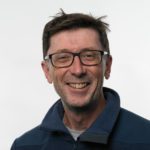Developing environmentally friendly sea urchin farming

Philip James leads an €8 million Horizon 2020 project called AquaVitae, with the mission to develop sustainable solutions for low-tropic aquaculture in the Atlantic. The senior scientist at Nofima believes that aquaculture of wild harvested sea urchins has a bright future.
Norway’s coastal waters were once inhabited by massive kelp forests, but many of them have disappeared due to the explosion of sea urchins.
Sea urchins pose a major environmental problem as they graze down the kelp beds, leaving only an underwater desert.
“Urchins have for a long time grazed the kelp forest along the Norwegian coast. Once they establish themselves, they can remain for decades,” says Nofima senior scientist Philip James.
Aquaculture can save the kelp
Estimates say that there are over 80 billion urchins along the Norwegian coast. This is bad news for other marine life, as the kelp beds are important spawning areas for fish and small marine species.
However, studies conducted by NIVA show that kelp beds return after the urchins have been removed. The return of kelp forests could have a particularly positive impact on the populations of cod and saithe.

A possible solution to the environmental problem posed by sea urchins is to remove the urchins from the seabed and enhance them in landbased or seabased ranches, to commercial size and quality, using a special feed developed by Nofima.
Working from Nofima’s head office in Tromsø, Philip James has a plethora of urchins located right outside his window. He is often seen diving in the sea, collecting sea urchins for research purposes.
“After only 10 weeks of feeding, the size and quality of the sea urchin roe increases and thus also the market value of the product,” says James.
Insane price per kilo
Sea urchin roe is one of the world’s most sought-after delicacies and is served as sashimi at exclusive restaurants all over the world.
The Japanese especially love sea urchins and eat over 50 000 tonnes of roe each year.
After the tsunami in 2011, however, the kelp forests off the coast of Japan were devastated and sea urchins are in the process of overgrazing the little that remains.
High quality urchin roe can thus be sold at a high price on the Japanese market, and in some extreme cases for thousands of NOK per kilo.

“Besides the potentially high value creation, saving the Norwegian kelp is an added environmental benefit from urchin production in Norway,” says James.
This is where the Norwegian SME Urchinomics comes into the picture.
EU funded project
Nofima is collaborating with Urchonomics, which is in the process of establishing Norway’s first land-based pilot ranch for sea urchins. Tarevoktere will help repair the kelp forest by harvesting sea urchins and handing them over to Urchinomics, who will then feed them for sale.
But it’s not just sea urchins that are on Philip James’ agenda.
In the AquaVitae project, he works with other researchers and aquaculture companies from around the world. The EU has provided €8 million funding to develop solutions for sustainable low-trophic aquaculture.
Low trophic species are groups of plants or animals that belong to the lower levels of the food chain. Sea urchins, algae, sea sausages and oysters are some of the low-trophic marine species that will have their potential tested by AquaVitae researchers.
Innovation in aquaculture
Aquavitae’s mission is to introduce new low trophic species, products and processes in marine aquaculture value chains across the Atlantic.
35 industry and research partners from 15 different countries, spread across four continents, make up the project. In addition to Europe, solutions are being developed for the industry in countries bordering the Atlantic Ocean, including Brazil and South Africa.
“Over the next 24 months, these solutions will be reviewed in regard to their suitability to meet the needs, demands and safety of consumers, environmental sustainability and economic viability,” James says.
He believes this process will strengthen the potential of the new species, processes and products that will form the main outcomes from the project.
An All-Atlantic virtual meeting
The first annual project meeting was supposed to be held in Flórianopolis, Brazil in late April. But due to the Covid-19 pandemic, the 80 participants met virtually instead.
The meeting lasted three days and included a workshop with Brazilian stakeholders, in support of increased research collaboration between Europe and Brazil.
“We had a great discussion and raised important topics to base the next steps for developing closer links between the Brazilian and European aquaculture industries,” says Eric Routledge, Deputy Head of Research at EmBraPa Fisheries and Aquaculture.
The meeting also had representation from the South African aquaculture sector.
The AquaVitae project
- AquaVitae is a research and innovation project funded by the EU’s Horizon 2020 programme, which began in 2019 and concludes in 2023.
- The project’s purpose is to introduce new low trophic species, products and processes in marine aquaculture value chains across the Atlantic.
- The five chosen value chains include macroalgae, Integrated Multi-Trophic Aquaculture (IMTA), echinoderm species (e.g. sea urchins), shellfish and finfish. IMTA is a process that farms several species together using waste from one species as feed for another.
- The project has 13 case studies that look at solutions for different species, processes and cross-cutting issues.
- AquaVitae supports the implementation of the Belém Agreement to enable international research collaboration across the Atlantic Ocean. This is a trilateral agreement between the EU, Brazil and South Africa.
Contact person
Topics
Low trophic species
